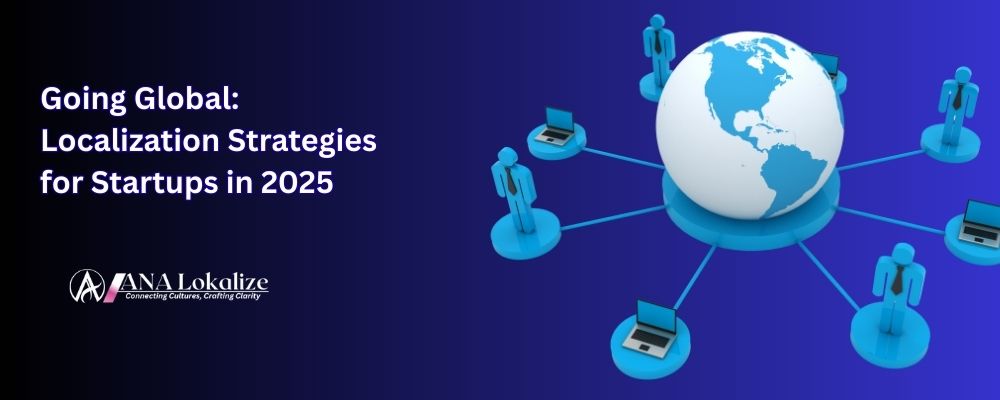Going Global Localization Strategies for Startups in 2025

Why Localization Matters
People prefer to use products in their own language. They trust brands that feel familiar. If a site feels foreign, they hesitate. If it feels local, they buy.
Research shows most buyers spend more on sites in their native tongue. Without localization, a startup loses sales, even if the product is strong.
Translation vs. Localization
Translation changes words. Localization adapts the full experience.
A product can be translated yet still feel foreign. Dates may use the wrong format. Prices may be confusing. Payment options may be missing. Even colors or images may carry different meanings.
Localization solves this. It covers:
Tone: Formal or casual language.
Design: Layouts and colors that match local style.
Payments: Cards, wallets, or cash options that buyers trust.
Content: Examples and stories that feel native.
Trends in 2025
Localization in 2025 is shaped by tech, culture, and law. Startups should watch these key shifts.
AI-Powered Support
AI tools now speed up translation. They cut time and cost. But human checks remain vital. AI often misses tone and nuance. The best results come from mixing AI with expert review.
Mobile First
Emerging markets are mobile-driven. Apps must be light and fast. Fonts and scripts must display well on cheap phones. A heavy design can kill growth.
Local Payments
Trust depends on payment options. In India, UPI rules. In China, WeChat Pay and Alipay lead. In Brazil, many still prefer cash on delivery. Offering the right mix cuts drop-offs and builds trust.
Data and Law
Each region has strict rules. The EU has GDPR. India and Brazil now enforce their own data laws. Startups must adapt storage, consent, and privacy flows. Missing this can block growth or bring fines.
Culture and Community
Users want more than features. They want respect. Local campaigns, regional faces, and cultural themes matter. In 2025, trust is built not only by tech but also by shared values.
Steps for Startups
Startups often lack big budgets. But smart steps can make localization work.
1. Pick the Right Markets
Do not expand everywhere at once. Study demand, language, laws, and rivals. Pick one or two markets to start.
2. Translate the Core
Focus on product pages, app screens, and support basics. Keep words simple and clear. Avoid slang unless checked by locals.
3. Add Local Payments
Even one trusted local payment option boosts sales. Without it, buyers may never finish checkout.
4. Localize Support
Offer FAQs, emails, or chat in local languages. If possible, hire local agents. Buyers trust when support feels close.
5. Adapt Marketing
Run campaigns with local faces and phrases. Work with influencers that feel real to each region.
6. Test and Improve
Launch small. Track sales, feedback, and reviews. Fix issues. Then expand further.
Examples of Smart Localization
Spotify in India: Lower prices, regional music, and Hindi plus Tamil support. Result: fast adoption.
Airbnb in China: Local payment methods and design tuned to local apps. Gained users in a tough market.
Shopify in Latin America: Spanish and Portuguese support plus local payment systems. Helped sellers scale quickly.
Each case shows that small details drive growth.
Mistakes to Avoid
Startups often trip when they expand too fast. Common errors include:
Relying only on machine translation.
Using design symbols that clash with local culture.
Ignoring tax and data laws.
Treating regions as one big market.
Avoiding these mistakes saves time, money, and reputation.
ROI of Localization
Localization pays back over time. It raises:
Conversions: More users complete purchases.
Retention: Buyers stay longer when support is local.
Brand trust: Respect builds loyalty.
Traffic: Local SEO brings organic visitors.
The gains stack year after year. A loyal user may bring friends and family. That reduces ad spend and boosts revenue.
The Future
In 2025, users expect native experiences. A “one size fits all” model no longer works. Competitors are quick to fill gaps.
The good news: tools are cheaper than ever. AI speeds up work. Cloud systems handle multi-language apps. Outsourcing makes local support possible even for small teams.
Startups that plan for localization from the start will grow faster. Those that ignore it risk being left behind.
Final Take
Going global is about respect. Respect for language, culture, and local needs. Translation is the first step. True localization is the finish line.
For startups in 2025, smart localization is not optional. It is the path to loyal users, lasting growth, and global reach.
Stephane B. Atangana
Professional translation and localization experts with 10 years of experience in helping businesses connect with global audiences.
Search Articles
Related Articles

key to successful corporate communication, AI vs Human translation

Why Getting Translation Right for Different Cultures Matters in Global Business

Translation vs. Localization: Why the Difference Is a Big Deal
Subscribe to Our Newsletter
Get the latest translation insights and industry news delivered to your inbox.
We respect your privacy. Unsubscribe at any time.
